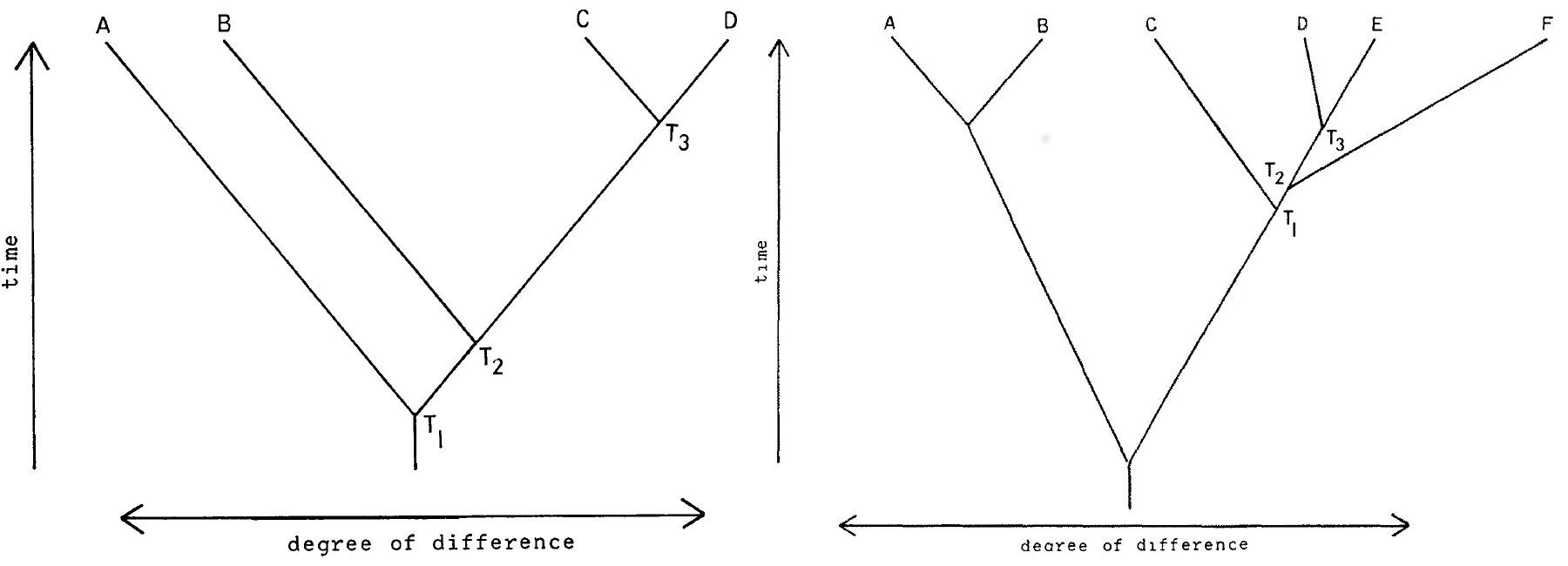From φῦλον 'phylum' 'race, tribe, classes' (cf. phylogenetics) and a contracted form of dendrogram ('tree-graph') or diagram, in both cases ultimately from γράμμα 'anything written'.
In the 1960s a differentiation between phenograms, cladograms and phylograms was introduced in evolutionary biology. A phenogram is a tree-graph of phenotypic features, a cladogram of clades, and a phylogram of phyla. Therefore the differences between these tree-graphs are related to their underlying features: phenograms use phenotypic information, while the other two convey information about genealogical relationship. There is no general agreement on how a phylogram differs from a cladogram. Mayr (1965, 82) maintained that a phylogram, contrary to a cladogram, conveys information also about the rate of evolutionary change; however this issue is open to debate (cf. Sokal et al. 1965, critically reviewing Mayr 1965). According to Mayr's view they are both types of phylogenetic trees.
In textual criticism, in order to arrive at a stemma codicum one is interested in genetic relationship. Witnesses which share the same ancestor are placed under the same branch. In a phylogram (like in a cladogram) each node represents a split in the tradition. If we follow Mayr, we may assert that, compared to a cladogram, a phylogram shows not only that two texts are different (represented by a node), but also how much evolution has taken place between them. The amount of change is represented by the length of the branch: the longer the branch, the greater the variation between the texts.
However, there are more recent approaches that limit only phylograms to conveying genealogical information and allow cladograms to convey any type of information about the taxa, without connotation of ancestry (cf. Kitching, and a fuller discussion in cladogram), in which case a cladogram is not a phylogenetic tree.
Illustration
Fig. 1. A cladogram and phylogram according to Mayr (Mayr 1965, 81 and 82, respectively). The phylogram (right) represents the evolution of apes with F as Homo sapiens.
References
– Kitching, Ian J., Peter L. Forey, Christopher J. Humphries, and David M. Williams. 1998. Cladistics: The Theory and Practice of Parsimony Analysis. 2nd ed. Oxford: Oxford University Press.
– Mayr, Ernst. 1965. "Numerical Phenetics and Taxonomic Theory". Systematic Zoology 14, No. 2, Sep. 1965, 73-97.
– Sokal, Robert R, Joseph Camin et al. 1965. "Numerical Taxonomy: Some Points of View". Systematic Zoology 14, No. 3, Sep. 1965, 237-243.
In other languages
DE: Phylogramm
FR: phylogramme
IT: filogramma

